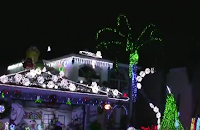Incandescent light bulbs had a good run, but with the Energy Independence and Security Act (EISA) of 2007 now fully active, you’ll notice it’s impossible to find traditional incandescent light bulbs in stores.
Here at Aztec Electrical, we will get your home or business lighting optimized on any new installation or remodeling projects you are considering. Ask us how to receive rebates and incentives from the Energy Trust of Oregon.
In a nutshell, EISA has taken a three year approach to converting the United States to energy-efficient lights by prohibiting the manufacturing or importing of non-compliant incandescent light bulbs after 2014.
- January 2012 – 100-watt bulbs banned
- January 2013 – 75-watt bulbs banned
- January 2014 –60- and 40-watt bulbs banned
How much will you save when switching your household to energy-efficient bulbs?
We’ll need to begin with the amount of light bulbs in a home. According to a recent survey, the average American household uses 47 light bulbs.
Now, these bulbs might have varying wattages from 100 watts down to 25, but for the sake of easy math and comparisons, let’s assume that we are using all 60 watt bulbs.
Total Light Wattage = 47 bulbs X 60 watts = 2,820 watts
Now let’s take a look at the wattage if all 47 lights are ...
CFL bulbs .... 658 watts
LED bulbs ... 447 watts
As you can see, there is quite a difference in the wattage between energy efficient bulbs and incandescent bulbs.
Cost Savings
The average cost of electricity in the United States is currently 11.88 cents per kilowatt hour (kWh) (for a more accurate cost, you can check your last billing statement for your cost per kWh), meaning if you used 1,000 watts of electricity for an hour, it costs you 11.41 cents.
For fun, here is a holiday video boosting 65K LED lights.


No comments:
Post a Comment